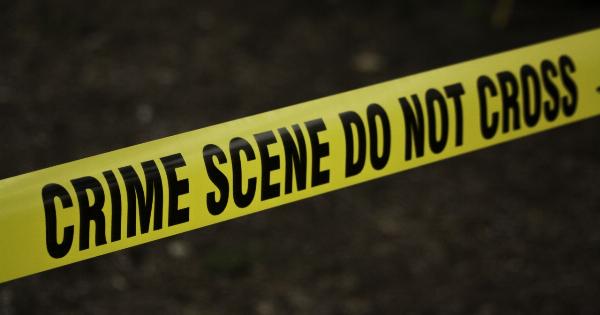Stroke is a medical emergency that requires immediate attention. It occurs when blood flow to the brain is disrupted, either due to a clot or a ruptured blood vessel.
Time is of the essence when it comes to stroke, as early intervention can greatly increase the chances of a successful recovery. In this article, we will discuss the three critical questions that can help you recognize and respond to a stroke, potentially saving a life.
What is a Stroke?
A stroke, also known as a cerebrovascular accident (CVA), occurs when there is an interruption of blood supply to the brain. This can happen when a blood vessel in the brain becomes blocked (ischemic stroke) or ruptures (hemorrhagic stroke).
Without proper blood flow, brain cells begin to die within minutes, leading to potentially severe and long-lasting effects.
The Three Critical Questions
Question 1: Is the person experiencing sudden numbness or weakness?
In the case of a stroke, one of the most common symptoms is sudden numbness or weakness, typically on one side of the body. This can affect the face, arm, or leg and may cause difficulty in speaking or understanding speech.
If you notice someone experiencing these symptoms, it is important to act quickly and move on to the next critical question.
Question 2: Is the person having trouble speaking or understanding?
Speech difficulties are a key indicator of a stroke. If the person is having trouble speaking, slurring their words, or appears confused when trying to communicate, it is crucial to seek immediate medical attention.
Time is critical in preventing further damage to the brain, so do not hesitate to take action.
Question 3: Is one side of the person’s face drooping?
Facial drooping is another significant sign of a stroke. If one side of the person’s face appears to be drooping or feels numb when touched, it is essential to act promptly.
Prompt treatment can potentially minimize the extent of damage and improve the chances of a better recovery.
What to Do if You Suspect a Stroke
If you suspect someone is experiencing a stroke, it is imperative to take immediate action. Time lost is brain lost. Here are the steps you should follow:.
Step 1: Call emergency services
Dial your local emergency number right away. Clearly explain the situation and inform the dispatcher that you suspect a stroke. Provide the exact location and any other relevant details to ensure a rapid response.
Step 2: Stay with the person
Remain with the person experiencing the stroke symptoms. Comfort and reassure them while waiting for medical help to arrive. Do not leave them alone.
Step 3: Note the time
Pay attention to the time when the symptoms first started. This is crucial information for medical professionals as it helps determine the most effective treatment options. Be prepared to provide this information when help arrives.
Step 4: Do not offer any food or drink
Refrain from giving the person anything to eat or drink, as they may have difficulty swallowing or could choke. It is important to wait for medical professionals to assess the situation and provide appropriate care.
Step 5: Reassure the person
Stroke can be a terrifying experience. Reassure the person that help is on the way and that you will stay with them until medical professionals arrive. Offer comfort and support to help alleviate their anxiety.
Step 6: Be prepared to provide information
When medical professionals arrive, be ready to provide any necessary information about the person and the observed symptoms. Your input can greatly assist in their rapid assessment and decision-making process.
Preventing Stroke
While we have focused on recognizing and responding to stroke symptoms, prevention is always better than cure. Here are some essential tips for reducing the risk of stroke:.
1. Maintain a healthy lifestyle
Adopt a healthy diet rich in fruits, vegetables, whole grains, and lean proteins. Limit your consumption of unhealthy fats, sugar, and sodium. Engage in regular physical activity and avoid smoking or excessive alcohol consumption.
2. Control chronic conditions
Manage chronic conditions such as high blood pressure, diabetes, and high cholesterol. Take medications as prescribed and attend regular check-ups with your healthcare provider to monitor and control these conditions effectively.
3. Be aware of family history
Some strokes have a genetic component. If you have a family history of stroke, make sure to inform your healthcare provider. They can provide guidance on additional preventive measures tailored to your specific needs.
4. Know the warning signs
Being familiar with the warning signs of a stroke can save lives. Educate yourself and your loved ones about the symptoms and the importance of seeking immediate medical attention.
Conclusion
Stroke is a medical emergency that requires swift action. By knowing the three critical questions – sudden numbness or weakness, trouble speaking or understanding, and drooping face – you can recognize the signs of a stroke and potentially save a life.
Remember, time is of the essence when it comes to stroke, so don’t hesitate to call emergency services if you suspect someone may be experiencing a stroke.














![The Importance of Recognizing Stroke Warning Signs [with Pictures]](/assets/media/medium/file/10/26/ec1752f20fddd8d6467d769d887430b3.jpg)















